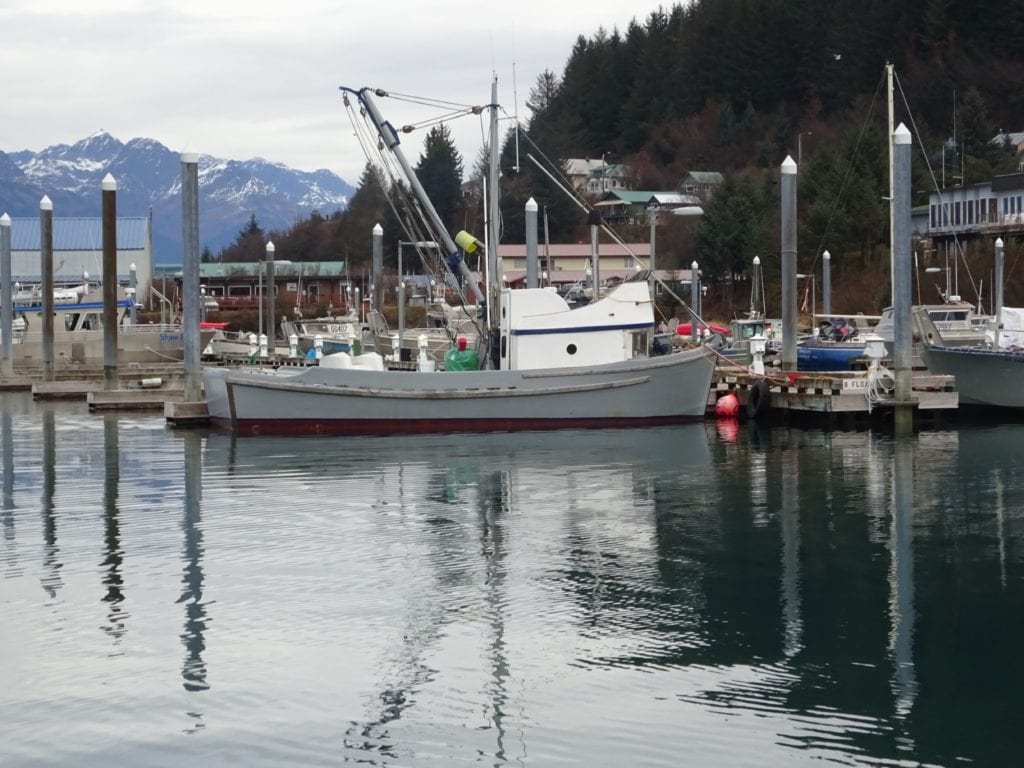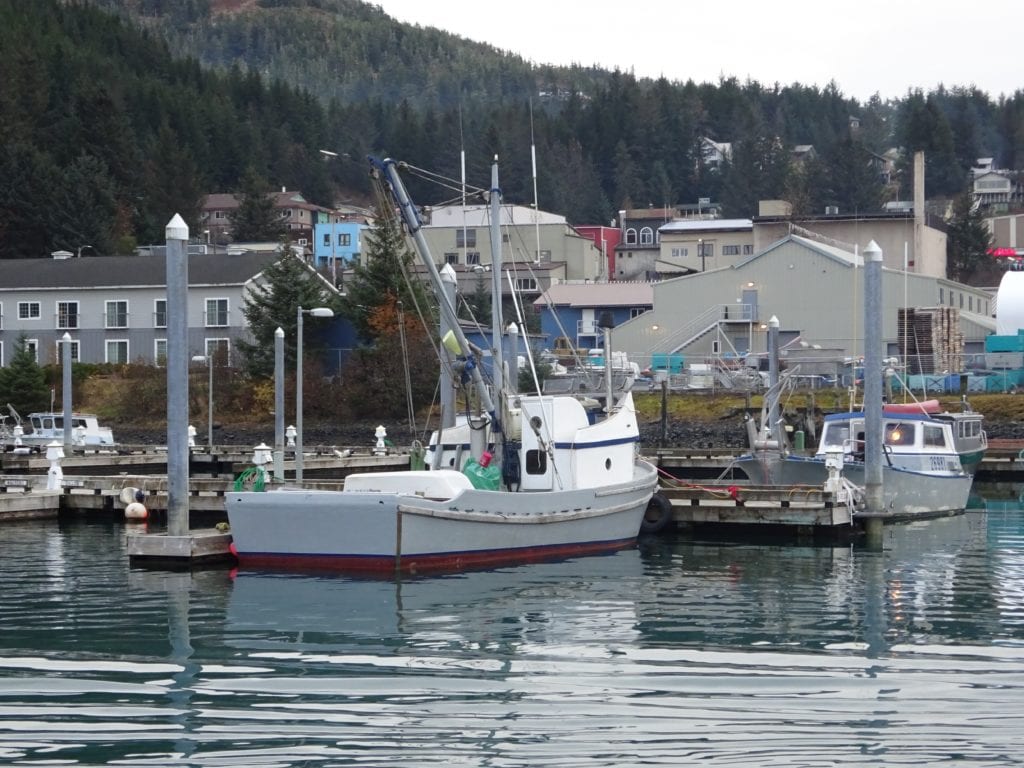
Wandering about today’s Cordova boat harbor, one would be hard pressed to find a wooden craft.
The growth of the gillnet and seine fleet is astonishing in both size and efficiency, and 99 percent of the boats now in the harbor are either aluminum or fiberglass.
Yet tied at the end of Float B in the North harbor is a craft that appears to be fiberglass but in fact was originally wood, a vestige of a different era and style of fishing.
It was built in a Parks Cannery boat shop that still stands today, amidst a group of Copper River Seafoods buildings, by a local character who was a master with the band saw, when he wasn’t busy sharing suds with patrons at many of Cordova’s favorite waterholes.
Named the Vecci, it was assembled by Martin Andersen in the winter of 1959, with longtime Cordova fisherman Charlie Simpler partnering in the project.
Back then, much of the Copper River gillnetting was done from open skiffs, which were towed out to the fishing grounds behind larger vessels that were then anchored to serve as a base for the operations.
The Vecci was the second in a foursome of similar crafts built by Andersen, in a unique design particularly suited for that style of fishing.
With a flat bottom and tunnel, plus what was considered a spacious cabin back in those day, the Andersen-style boats could travel in shallow water, and also go dry on falling tides without concern for tipping over.
Andersen’s first boat was a 32-footer he built for himself, and named the Linda Marnell, in honor of his two daughters.
The second, extended to 34 feet, with an 11-foot beam, was the Vecci. Its unusual name contained the first letters of the names Charlie’s family, including his wife Violet, sons Charles Thomas (Tom) and Robert (Bob) Edward, and his daughters Charlette and Cathy.
According to Charlie’s son Bob “the letter ‘I’ was added on to the end to round off the name.”
Ensuing boats included the Kathleen L, built for Enok Lian and named after his wife; and the Krissel, built for Gale Allen.

The boats had marine plywood sides with plank bottoms and were later covered with fiberglass to extend their life. Powered by a six-cylinder Ford Diesel, the Vecci drew only 1.5 feet of water, but was also notoriously slow.
After gillnetting on the Flats, the Simpler family crew took the Vecci seining. It took them 12 to 14 hours to make it to Chenega Island in the Southwest District of Prince William Sound, “depending on the tide,” according to Bob Simpler.
Ironically, 1960, the first season they seined, was the worst in history, and Bob Simpler still remembers to this day that they caught only 8,500 fish for the whole season.
His brother Tom recalls Andersen’s wizardry with the band saw.
“It was amazing how he could cut the ribs for the hull without even measuring … if you could get him out of the pubs.”
Virgil Carroll, who came to Cordova on the Coast Guard buoy tender Sedge and eventually became a fisherman after marrying Charlie’s daughter Charlette, still laughs about the speed of the Vecci.
“Eventually they replaced the original 100-horsepower engine with a 120-horsepower model, but it didn’t go any faster,” Carroll said.
According to Carroll, one time they were heading across the Flats in the Vecci to hunt moose in the Martin River area. They had an airboat loaded on the stern, and at one point fired it up to help speed up the trip.
In 1981, the Simplers upgraded to a 46-foot fiberglass Roberts seiner they named the Pt. Countess, in honor of one of their favorite seining spots near Chenega Island.
Gus Arvidson bought the Vecci and fished it a couple seasons before selling it to Al Weathers Jr. Bob Ladd, a skilled local boatwright, then purchased it and kept the vessel in topnotch condition.
Ladd found it a perfect vessel to use as a base for deer hunting on Hawkins Island, letting it go dry near the site of Palugvik, an ancestral home of Chugach people.
“It was my floating cabin for 16 years,” Ladd said.
Ladd confirmed the Vecci’s speed.
“Four knots against the tide, six knots at slack water, and eight knots with the tide,” he said. “But it only burned three gallons of fuel per hour.”
Ladd recently sold the boat to Chris Bolin, who after checking with Ladd, changed its name to the Ari Dawn, in honor of his daughter.
So, the name has changed, but 60 years after its launching, moored on the very end of a long float jutting out into the harbor, is a remarkable craft with tales to tell.
And as high-powered bow pickers and massive limit-seiners idle by on their way to the fishing grounds, perhaps a few skippers marvel at the legacy of what used to be.





